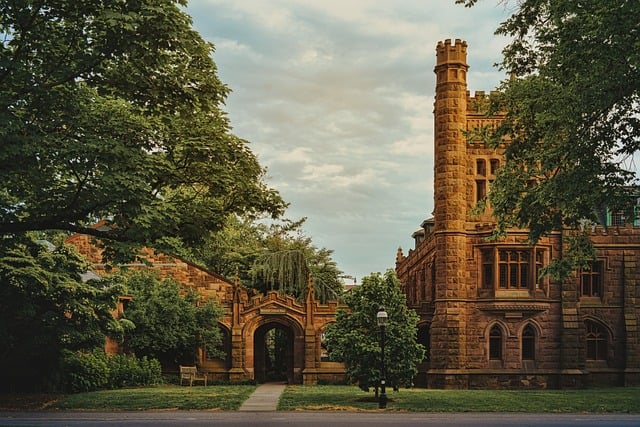Lucy the Elephant, a towering 38-foot wooden monument in Cape May County, New Jersey, is a vibrant symbol of the state's coastal heritage and historical allure. Built in 1876 as a fairground attraction, this beloved landmark has endured weather challenges to become an iconic cultural destination. Visitors can enjoy stunning Atlantic Ocean views, explore her up close, and immerse themselves in her unique charm, making Lucy a must-visit attraction for all who appreciate New Jersey's rich history and artistic spirit.
“Discover the enchanting tale of Lucy the Elephant, a historical monument standing tall in New Jersey. This iconic structure, with its towering form, has captivated visitors for generations. From its inception as a promotional creation to becoming a state landmark, Lucy offers a glimpse into the region’s cultural heritage.
This article explores the rich history, location details, and the profound impact of Lucy the Elephant on New Jersey’s tourism scene, making it a must-visit destination for locals and out-of-towners alike.”
- A Historical Monument: The Story of Lucy the Elephant in New Jersey
- Location and Access: Where to Find and How to Visit Lucy
- Cultural Significance and Tourism: Impact on New Jersey's Landscape
A Historical Monument: The Story of Lucy the Elephant in New Jersey

Lucy the Elephant, standing tall at 35 feet, is a historic monument and iconic symbol of New Jersey’s coastal heritage. This colossal creation, built in 1876, was once a bustling attraction at the Cape May County Fair, captivating audiences with its sheer size and unique design. Over time, Lucy endured weather-related wear and tear, but her resilience as a cultural landmark remains unwavering. Today, she stands as a testament to the ingenuity of her creators and serves as a popular destination for locals and tourists alike, drawing visitors from across New Jersey and beyond.
The story of Lucy is deeply rooted in the state’s history, reflecting a time when such monumental structures were built to promote local tourism. Her presence along the New Jersey coastline has inspired countless photographs, paintings, and stories, each contributing to her enduring legacy. As a symbol of both past and present, Lucy continues to captivate and educate, offering visitors a glimpse into the rich cultural tapestry of New Jersey’s history.
Location and Access: Where to Find and How to Visit Lucy

Lucy the Elephant, a beloved landmark in Cape May County, New Jersey, is a must-visit attraction for locals and tourists alike. This massive wooden structure stands tall on the cape’s southern tip, offering breathtaking views of the Atlantic Ocean and a unique photo opportunity. To reach this iconic site, visitors can take a scenic drive along Route 109, which provides easy access from major highways in the area. The address is 978 Lavenstuth Avenue, Cape May Court House, ensuring a straightforward search for GPS navigation.
Upon arrival, visitors are greeted by a vibrant atmosphere, with Lucy’s friendly visage welcoming them to her domain. The surrounding area offers ample parking and access points, making it convenient for all types of visitors, including those with limited mobility. Whether by car or foot, navigating around Lucy is straightforward, allowing everyone to appreciate this iconic New Jersey symbol up close.
Cultural Significance and Tourism: Impact on New Jersey's Landscape

Lucy the Elephant, standing tall at 38 feet, is more than just a colossal statue in Atlantic City, New Jersey; she embodies the state’s rich cultural heritage and has become an iconic symbol, attracting visitors from all over. This majestic structure represents a time when seaside resorts boomed, reflecting New Jersey’s transformation into a popular tourist destination. The elephant’s presence has significantly impacted the state’s landscape, transforming it into a vibrant canvas for art and tourism.
As a cultural landmark, Lucy offers a unique blend of history and entertainment, encouraging visitors to explore the stories behind her creation and the evolution of Atlantic City. Her sheer size and distinctive design make her a focal point, drawing attention to New Jersey’s artistic side and inspiring creativity in the region. This iconic figure has successfully blended past and present, becoming an integral part of the state’s tourist appeal and leaving a lasting impression on all who witness her grandeur.
